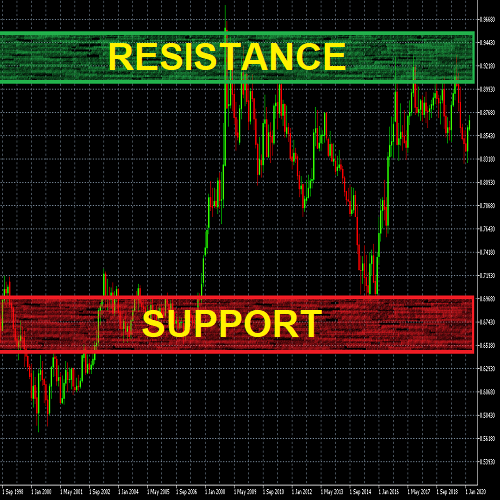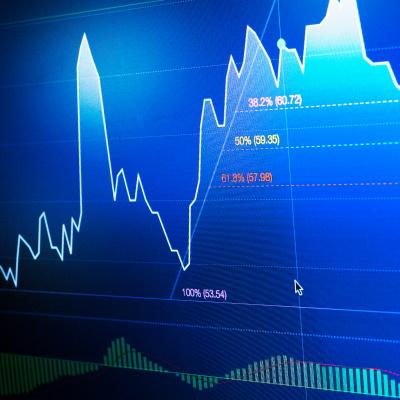Bilateral Chart Patterns – A Basic Guide
What are bilateral chart patterns? These types of triangle chart patterns include ascending, descending or symmetrical triangle. Learn more with Queensway.

Going Two Ways
There are many FX chart patterns that you should learn to read and use in order to become a successful foreign exchange trader.
Reversal chart patterns indicate a potential reversal of the current trend. These chart patterns are known as double top, double bottom, head and shoulders, inverse head and shoulders, rising wedge and the falling wedge.
Another set of chart patterns that can be seen on Forex charts include continuation patterns. These patterns indicate that the current trend will continue after a short pause in the direction of the trend. They are known as falling wedge, rising wedge, bullish rectangle, bearish rectangle, bullish pennant and bearish pennant.
Bilateral chart patterns are patterns that indicate or signal that the currency’s price can move in either direction. Either the price will move with the current trend, or the price will move against the current trend.
Sounds like a peculiar Forex signal doesn’t it? What can a trader do with a signal like that?
Funnily enough, traders can still use these types of patterns to their benefit. As the price doesn’t know which way to go, the trader will hedge the risk and trade both ways. This basically refers to the trader placing orders both above and below the resistance lines indicated on the chart, as will be discussed in more detail further on in this article. However, the trader won’t perform a market trade but will perform two order trades. One of these trades will be a sell transaction and the other, a buy transaction.
There are three types of bilateral chart patterns and they are known as the ascending triangle, the descending triangle and the symmetrical triangle.
The Ascending Triangle
 In the ascending triangle pattern (below), the resistance line is horizontal, whereas the support line slopes upwards in a sequence of higher lows. This shows that the buyers are unable to push the price above a certain level, meaning that for one reason or another, the buyers have been able to influence the market and gain momentum. However, keep in mind that they are still unable to break the resistance level which in the chart below is shown to be quite strong.
In the ascending triangle pattern (below), the resistance line is horizontal, whereas the support line slopes upwards in a sequence of higher lows. This shows that the buyers are unable to push the price above a certain level, meaning that for one reason or another, the buyers have been able to influence the market and gain momentum. However, keep in mind that they are still unable to break the resistance level which in the chart below is shown to be quite strong.
However, as time goes on, they gradually start to overcome the sellers and the price moves up and higher lows are made. The Forex chart indicates that a breakout will in fact happen, but its direction is unknown. That is why whenever a triangle pattern forms, it is important that the trader is ready for a breakout in one direction or the other and places entry orders accordingly: a buy above the resistance line and a sell below the support line.
In the majority of the cases examined, the breakout happens at the tip of the triangle and will usually occur in an upward direction, but not always.
In the example given below, the buyers were somehow overcome by the sellers which meant that the breakout in prices actually dropped. This would have been the perfect time to put in your entry orders.
The Descending Triangle
 Descending triangles in forex charts (below) are the exact opposite of ascending triangles, as they are a series of descending highs which form a descending resistance line and a horizontal support line. The trader should, therefore, expect a breakout in price in either direction.
Descending triangles in forex charts (below) are the exact opposite of ascending triangles, as they are a series of descending highs which form a descending resistance line and a horizontal support line. The trader should, therefore, expect a breakout in price in either direction.
As with any triangle pattern, whether symmetrical, ascending or descending, the trader should place a buy order above the resistance line and a sell order below the support line. When the breakout occurs, they should cancel the order that is not on the side of the breakout.
The difference between the ascending and descending triangle chart is a very simple concept to grasp. While the ascending triangle indicates that the buyers are dictating the prices, which often means that the prices will remain on the lower end of the scale, the descending triangle chart indicates that it is in fact the sellers who hold the power and it is them who are dictating the prices in the market.
In this chart pictured below, the sellers seem to be dictating the price. Once the price enters the domain at the tip of the triangle, it is highly likely that a breakout is in the cards. However, it is more than likely that the breakout will happen in a downward direction, but this is not always the case.
The Symmetrical Triangle Chart
 Finally, the symmetrical triangle chart pattern is shaped as in the diagram below.
Finally, the symmetrical triangle chart pattern is shaped as in the diagram below.
This chart indicates the resistance of high line slopes at a downward angle and the support line of the low slopes in an upwards direction as they converge towards a single point at the tip of the triangle. The reason for this occurring is that neither the sellers nor the buyers can make any sort of telling change to the prices. This basically means that neither has been able to gain momentum and dictate which direction the prices will go. This is what is commonly referred to as the consolidation period.
As this forex charts pattern indicates that the price could go anywhere, the trader (as with the ascending and descending chart patterns) places both a buy (above the resistance line) and a sell order (below the support line) and cancels the order that is not on the eventual breakout side.
When the two lines converge, it is more than likely that there will be an explosion breakout. The one thing about this explosion is the fact that nobody really knows in which direction the explosion will occur. When you come across this type of chart, it is therefore recommended that you place stop entry orders both just below and above the slopes.
Finally
As with most one-dimensional signals (those that rely on a manifest pattern – line or candlestick) one should beware of false signals. It is inadvisable to take these at face value without first determining volume, which will also indicate the strength of the signal received.
And, perhaps, to call up at least one more trend-describing technical indicator.






